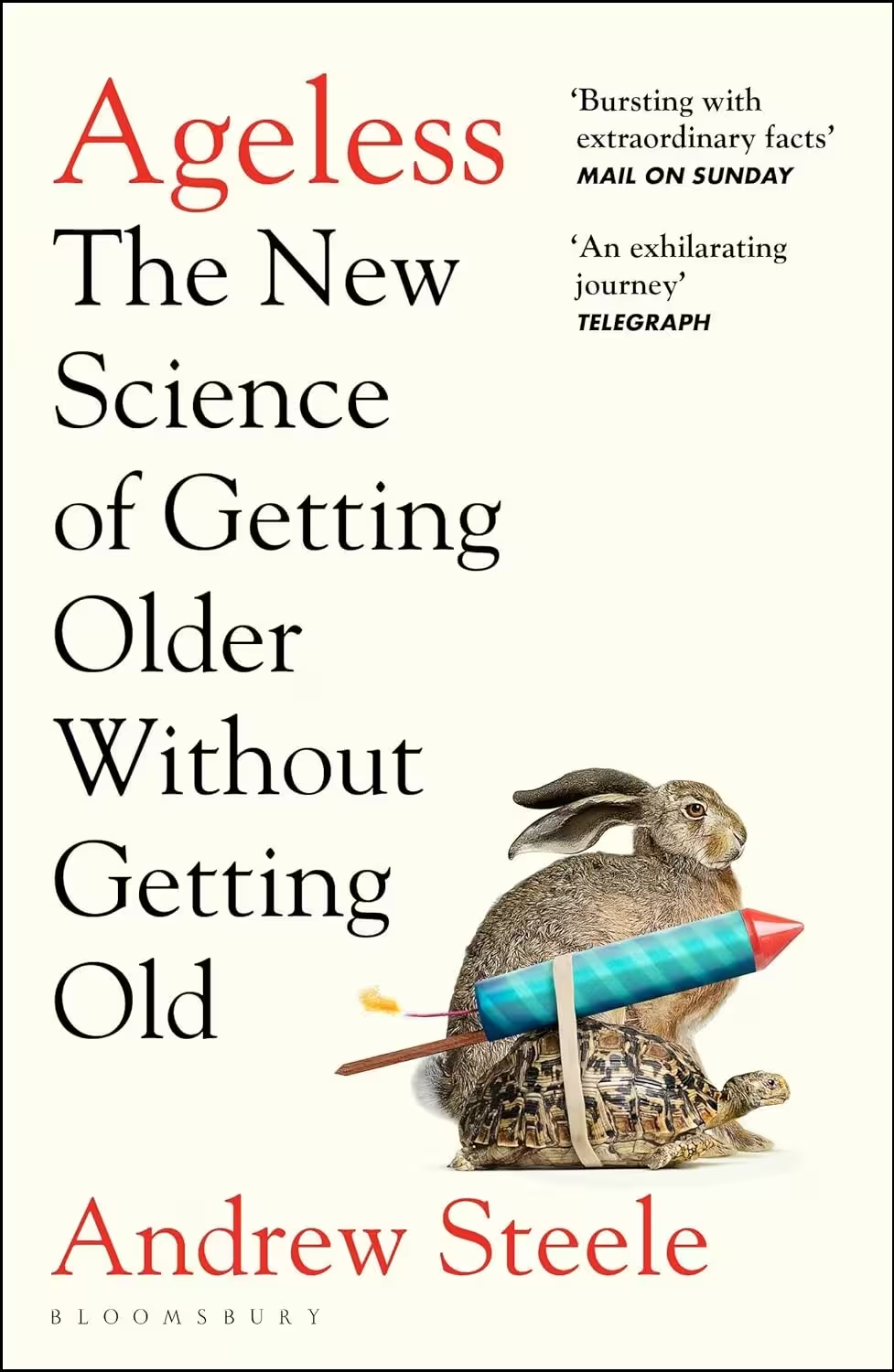What if dying of old age was treated as a disease, no different to cancer or dementia? That’s the question posed by Biologist Andrew Steele in this book. Framed this way, suddenly ageing becomes the leading cause of death in the developed world and one that we one day might look to “cure”.
The book is divided into three parts. In part one, he looks at our understanding of the ageing process and the nine “Hallmarks of ageing”. In part two, he covers the cutting edge science that looks to address each Hallmark. Finally, he gives general guidance for what we can do today to give us the best chance at living longer. Who knows, we may reach the “longevity escape velocity”, where science increases life expectancy at a faster rate than we age.

PRO TIP: Take notes! When you read a book, use a blank sheet of paper as a bookmark. Write down any interesting facts and information from the book. This condenses a whole book into 3-4 pages of key notes that are important and relevant to you.
My Notes on Ageless: The New Science of Getting Older Without Getting Old
Part One: An Age-Old Problem
- Humans’ risk of death doubles every 8 years. At 65 it’s 1%, at 80 it’s 5%.
- Life expectancy has risen steadily by ~3 months for every year since the year 1800, when it was 40. However, this number is skewed by infant mortality, and even in prehistoric times, those making it to aged 15 could expect to live to around 50.
- Evolution does not care what happens to you after you’ve reproduced, as you’ve already passed on your genes.
- Ageing was slowed by 50-100% in rats and many other mammals using dietary restriction, though larger animals saw only modest increases, meaning humans may not expect a large effect.
The nine Hallmarks of ageing and the 7 SENS (Strategies for Engineered Negligible Senescence) of Aubrey de Gray are two systematic classifications of ageing. Summarised by the author, they can be grouped into the following:
- DNA damage and mutations
- Trimmed telomeres
- Proteins: Autophagy, amyloids and adducts
- Epigenetic alterations
- Accumulation of senescent cells
- Malfunctioning mitochondria
- Signal failure
- Microbiome changes
- Cellular exhaustion
- Immune system malfunction
Part Two: Treating Ageing
- We need to clear senescent cells, misfolded proteins and other cellular “junk”
- The four genes to turn back the clock in stem cells are called the “Yamanaka Factors”
- Telomerase is an enzyme that allows cells to divide indefinitely and avoid senescence. Unfortunately a similar mechanism is used by cancer cells to continue dividing, so telomerase is a pro-cancer enzyme.
- Promising mitophagy boosting drugs including Urolithin A, NMN and spermidine
- Two genes overrepresented in centenarians are APOE and FOXO3
- PCSK9 inhibitors are the gold standard for cholesterol management, useful for those who don’t respond to statins
- The next step between in vitro and in vivo will be in silico, where experiments will be run inside computer programs. Techno-futurists believe we should be investing more in advancing computer technology which would be used to reverse ageing, rather than investing in biology directly.
Part Three: Living Longer
- “Longevity escape velocity” is when medicine increases life expectancy at a rate of one year per year we are alive
- Living longer in good health involves following the basics. These are not smoking, eating well, exercising and getting enough sleep.
- Good dental hygiene reduces chronic inflammation in the body
Thank for reading. If you’re interested in the topic of longevity and haven’t yet read Outlive by Dr Peter Attia or Lifespan by Dr David Sinclair, I highly recommend those as well.

